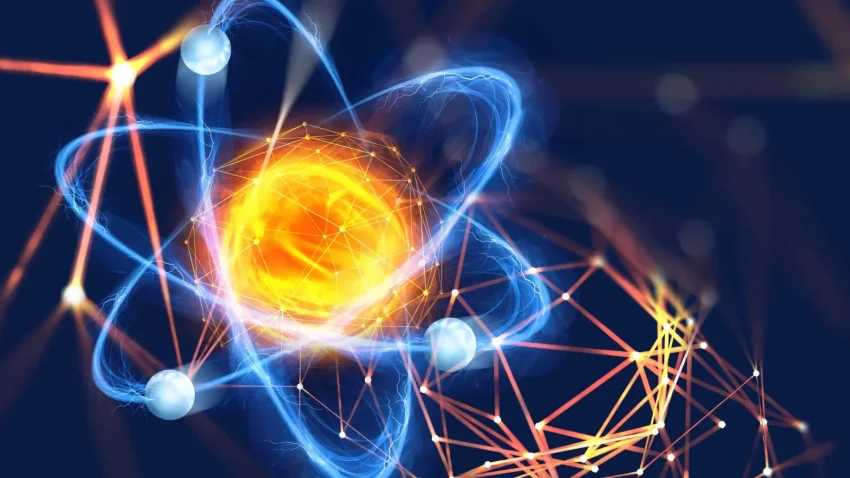Understanding the Role of Neutrinos in Stellar Collapse
When massive stars reach the end of their lives, a dramatic and complex process begins. As these stars exhaust their fuel, their cores collapse under their own gravity. This collapse is not silent; it involves some of the most elusive particles in the universe—neutrinos. These ghostlike particles play a crucial role in what happens next. Recent research suggests that neutrinos might be involved in even more mysterious phenomena than previously thought.
A team of scientists from the Network for Neutrinos, Nuclear Astrophysics, and Symmetries (N3AS) has discovered that secret interactions between neutrinos could significantly alter the way massive stars collapse. Some of the researchers are affiliated with the University of California, San Diego. Their study indicates that if neutrinos break the usual rules by violating a property known as lepton number conservation, the process inside a dying star might change dramatically.
What Are Neutrinos?
Neutrinos are incredibly tiny, nearly massless particles that travel at nearly the speed of light. They are often referred to as “ghost particles” because they rarely interact with other matter. Every second, trillions of neutrinos pass through your body without you noticing. There are three types of neutrinos, or “flavors”: electron, muon, and tau. Despite their ubiquity, neutrinos are challenging to study due to their minimal interactions with other particles.
However, during the collapse of a massive star, conditions change drastically. The core becomes so dense that even neutrinos start to get trapped. This leads to more frequent collisions, creating an environment that some scientists call natural “neutrino colliders.” These extreme conditions may help answer one of the biggest mysteries in physics: do neutrinos interact with each other in ways beyond our current understanding?
A Hotter, More Chaotic Core
In the traditional model, neutrinos behave predictably. They are primarily of the electron type, and their interactions with the star’s matter result in a relatively cool core. This kind of collapse typically leaves behind a neutron star—a very dense object composed mostly of neutrons.
But what if neutrinos secretly violate lepton number conservation? This would mean that neutrinos and antineutrinos could swap and mix more freely than expected. The N3AS team found that this kind of mixing would lead to a hotter, more chaotic core. More flavors of neutrinos would appear, and electrons would be captured more easily by protons. This results in fewer electrons overall, lowering the electron fraction in the star’s core.
The outcome is a messier, hotter collapse. Instead of forming a neutron star, the core could become so hot and filled with neutrons that it transforms into a black hole. This significant change is all due to neutrinos behaving in ways we’ve never seen before.
The Science Behind the Theory
In their paper, the researchers explain that a rapid balancing of neutrinos and antineutrinos creates more disorder, or entropy, in the core. This extra entropy drives more electron capture, leading to a core with fewer electrons and more neutrons. This affects how the collapse proceeds and what kind of remnant is left behind.
The effect is particularly strong when neutrinos interact with each other in a way that violates lepton number. These interactions, called lepton-number-violating neutrino self-interactions (LNV νSI), are not part of the standard model. However, if they exist, they could be changing the final moments of massive stars in ways we haven’t recognized until now.
The paper also outlines the specific ranges of particle masses and interaction strengths needed for this theory to hold. These values aren’t just theoretical; they could be tested in the near future using particle accelerators and detectors designed to study neutrinos.
Clues From the Future
So, how can we determine if these strange neutrino behaviors are real? Scientists are hopeful that new technology will help. The Deep Underground Neutrino Experiment (DUNE), being built at the Fermi National Accelerator Laboratory, will send beams of neutrinos through the Earth to observe how they change. It’s one of the most advanced experiments planned to study these ghostlike particles.
If LNV νSI interactions are real, DUNE might be able to detect them. But it’s not the only hope. Scientists are also monitoring the sky. When a massive star collapses in our galaxy, it emits a flood of neutrinos. If detectors on Earth can catch those neutrinos, they may reveal unexpected patterns—clues about what happened inside the star.
Gravitational waves, ripples in space caused by big cosmic events, might also help. A core collapse with secret neutrino interactions could produce different wave patterns than a standard collapse. Observing these differences could add another piece to the puzzle.
Looking Beyond the Standard Model
For decades, physicists have relied on the standard model to explain how particles behave. It’s one of the most successful theories in science. However, it has limitations. It doesn’t explain gravity, dark matter, or many mysteries of the universe. Now, neutrinos might be guiding us toward something new.
If neutrinos do violate lepton number conservation, it would mean there’s more to the story than we thought. It could open a door to physics beyond the standard model, possibly linking to dark matter or the early moments of the universe. The work by the N3AS team is theoretical, but it gives scientists a new direction to explore.
With new tools and detectors, the next few years could bring answers to some of physics’ biggest questions.
